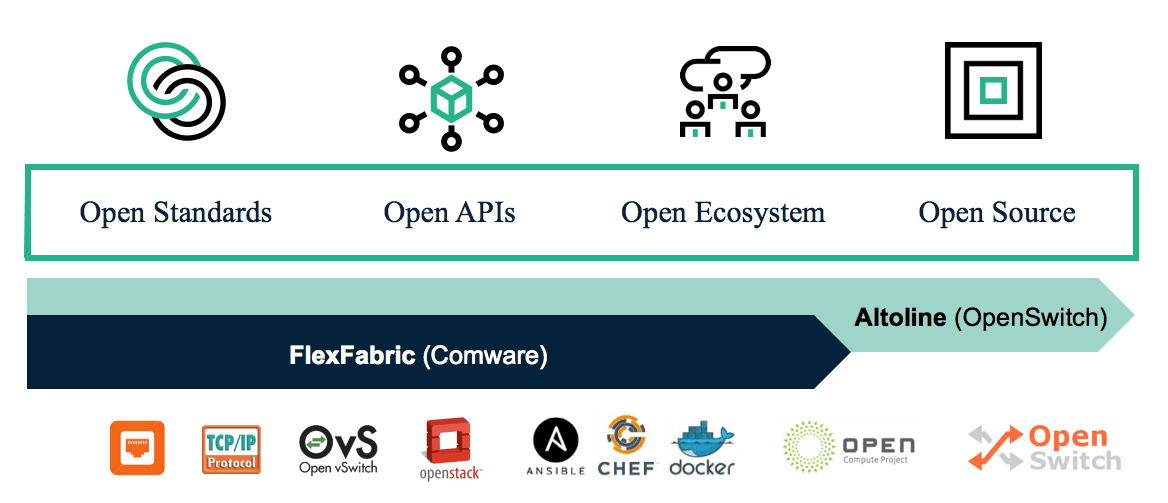These days, depending on who you ask, you get a different view on what open networking really means.
Some vendors just look at the standards that exist and assume that as long as you conform to those standards, or create a new one, you are open.
Others believe that in order to be open you need to provide access to your infrastructure in a programmable way through APIs. However, those APIs are often closed out or only work with their solution.
Some vendors measure their openness by the ecosystem that surrounds them. While it's a valid metric, the definition loses ground if the ecosystem itself is a closed one, one that does not offer the choice for innovation.
Our view is that to achieve true openness in networking, your products and solutions have to deliver on four key pillars.

Open Industry Standards – The infrastructure has to be based on Open Industry Standards. Whether it's the protocols that the devices use to interact within a network or externally across their peers you need an architecture that's open every step of the way.
Open APIs – True agility comes when you are able to program your infrastructure as code. Our vision around composable infrastructure provides a unified API across the underlying infrastructure. This is possible end-to-end because of a truly open API at the networking level.
Open Ecosystem – An ecosystem of partners defines how broadly your solution set can be deployed. A closed system by definition prevents others from openly interfacing with your offer, thus stifling collaboration and increasing the time to market.
Open Source – Perhaps the most obvious definition of open is around open source where the underlying entity is almost entirely written as open source. This enables innovation in the marketplace while ensuring that the resulting product is constantly secured by the community that is contributing to it.

HPE's FlexFabric portfolio delivers on the vision of open across the first three pillars. Our innovations in the data center allow our devices to interoperate with any other vendor since they are based on open industry standards. The APIs at the device level are also open, enabling programmability across the entire infrastructure. Familiar tools like Ansible and Chef, that are already prevalent in the data center compute, need to be supported by your networking components, too.
To complete the picture of open networking, we have introduced HPE Altoline, a complete networking platform of hardware, software, support and service that offers customers the ultimate choice in hardware and software.
OpenSwitch, an open network operating system that is truly open source, allowing for greater innovation. With the introduction of OpenSwitch, we complete our vision around open networking offering choice to our customers with open industry standards, open APIs, an open ecosystem, and open source.
Come join us in this revolution as we pave the way into the future of open networking.




